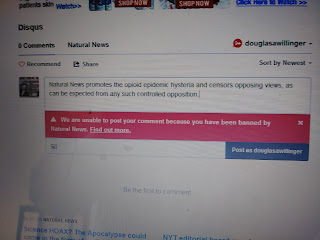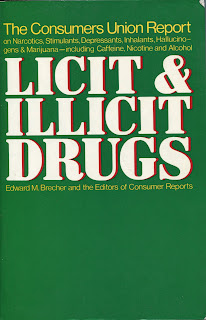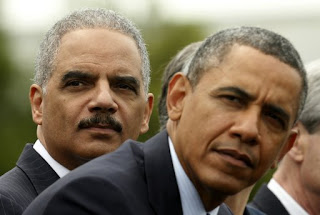MJ Displacing Alcohol = Increased Highway Safety
A Revelation February 21-22, 2012
http://freedomofmedicineanddiet.blogspot.com/2013/02/stay-off-grass.html

KIRO-TVA recent report by KIRO-TV, the CBS station in Seattle, provides further evidence that Washington's new standard for driving while under the influence of marijuana is a poor measure of impairment. Initiative 502, which legalized marijuana for recreational use, established a per se standard of five nanograms of THC per milliliter of blood. Critics argued that cannabis consumers may exceed that level even when they are not impaired, and KIRO did a simple driving experiment (video below) that shows they were right. The station enlisted three volunteers: Addy Norton, "a 27-year-old medical marijuana patient and heavy daily marijuana user who smoked pot before arriving at the test site"; Dylan Evans, a 34-year-old weekend pot smoker; and Jeff Underberg, 56-year-old who smokes pot occasionally. All three of them satisfactorily completed a driving course at THC levels far above the legal limit.
Norton arrived with a THC level of 16 nanograms, more than three times the DUID cutoff, but nevertheless drove fine, according to the driving instructor who accompanied her with his foot hovering over a second brake and his hand ready to take the wheel. After Norton smoked three-tenths of a gram, she tested at 36.7 nanograms, more than seven times the legal limit, but still drove OK. Even after she consumed nine-tenths of a gram, a "drug recognition expert" from the Thurston County Sheriff's Office said her driving was merely "borderline." Only after consuming a total of 1.4 grams of pot and achieving a THC level of 58.8 nanograms, almost 12 times the legal limit, was Norton clearly too stoned to drive.
Evans arrived with zero THC in his blood but hit 26 nanograms, more than five times the DUID cutoff, after smoking three-tenths of a gram. He nevertheless was "doing fine behind the wheel." Underberg, who also started at zero, hit 21.7 nanograms, more than four times the legal limit, after smoking his three-tenths of a gram. "While his driving was slow," KIRO reported, "it was still acceptable." According to the driving instructor, "He did real well." Unlike Norton, Evans and Underberg were both clearly impaired after smoking twice more, consuming a total of nine-tenths of a gram. KIRO evidently did not draw blood from Evans or Underberg at that point. But two and a half hours later, Evans tested at 11.1 nanograms, more than twice the legal limit. Underberg was at 12.9 nanograms one hour and 45 minutes after his last puff. Those results suggest that occasional users may exceed the legal limit hours after they smoke, even when they are no longer intoxicated.
Keen not to be seen as encouraging people to drive while stoned, KIRO's correspondent closed his report with some responsible-sounding caveats. "It's true all three volunteers were able to safely drive a car for a while while four times or more over the legal marijuana DUI limit," he said, "but they eventually made driving errors that on a public road could have resulted in getting pulled over by police or much worse." Yes, but they made those errors at THC levels much higher than the legal standard for impairment. It's clear people can be too stoned to drive safely; the question, assuming it is appropriate to have a per se standard at all, is what the cutoff should be. Turning to that issue, KIRO's reporter said:
Washington used to require evidence of impairment, including but not limited to blood test results, which is still the approach taken in Colorado, the other state that legalized marijuana last year. The Colorado legislature has considered a five-nanogram standard in the past and may yet adopt a modified version of it, establishing a rebuttable presumption of impairment at that level. But that makes no sense until we have a clearer idea of how many people really are too stoned to drive at five nanograms. Larger-scale, more systematic research along the lines of what KIRO did should come before any changes to the law.
You can watch video of the driving tests here and below.
http://freedomofmedicineanddiet.blogspot.com/2013/02/stay-off-grass.html
Pot Smokers Drive Fine Far Above Legal THC Limit
KIRO-TVA recent report by KIRO-TV, the CBS station in Seattle, provides further evidence that Washington's new standard for driving while under the influence of marijuana is a poor measure of impairment. Initiative 502, which legalized marijuana for recreational use, established a per se standard of five nanograms of THC per milliliter of blood. Critics argued that cannabis consumers may exceed that level even when they are not impaired, and KIRO did a simple driving experiment (video below) that shows they were right. The station enlisted three volunteers: Addy Norton, "a 27-year-old medical marijuana patient and heavy daily marijuana user who smoked pot before arriving at the test site"; Dylan Evans, a 34-year-old weekend pot smoker; and Jeff Underberg, 56-year-old who smokes pot occasionally. All three of them satisfactorily completed a driving course at THC levels far above the legal limit.
Norton arrived with a THC level of 16 nanograms, more than three times the DUID cutoff, but nevertheless drove fine, according to the driving instructor who accompanied her with his foot hovering over a second brake and his hand ready to take the wheel. After Norton smoked three-tenths of a gram, she tested at 36.7 nanograms, more than seven times the legal limit, but still drove OK. Even after she consumed nine-tenths of a gram, a "drug recognition expert" from the Thurston County Sheriff's Office said her driving was merely "borderline." Only after consuming a total of 1.4 grams of pot and achieving a THC level of 58.8 nanograms, almost 12 times the legal limit, was Norton clearly too stoned to drive.
Evans arrived with zero THC in his blood but hit 26 nanograms, more than five times the DUID cutoff, after smoking three-tenths of a gram. He nevertheless was "doing fine behind the wheel." Underberg, who also started at zero, hit 21.7 nanograms, more than four times the legal limit, after smoking his three-tenths of a gram. "While his driving was slow," KIRO reported, "it was still acceptable." According to the driving instructor, "He did real well." Unlike Norton, Evans and Underberg were both clearly impaired after smoking twice more, consuming a total of nine-tenths of a gram. KIRO evidently did not draw blood from Evans or Underberg at that point. But two and a half hours later, Evans tested at 11.1 nanograms, more than twice the legal limit. Underberg was at 12.9 nanograms one hour and 45 minutes after his last puff. Those results suggest that occasional users may exceed the legal limit hours after they smoke, even when they are no longer intoxicated.
Keen not to be seen as encouraging people to drive while stoned, KIRO's correspondent closed his report with some responsible-sounding caveats. "It's true all three volunteers were able to safely drive a car for a while while four times or more over the legal marijuana DUI limit," he said, "but they eventually made driving errors that on a public road could have resulted in getting pulled over by police or much worse." Yes, but they made those errors at THC levels much higher than the legal standard for impairment. It's clear people can be too stoned to drive safely; the question, assuming it is appropriate to have a per se standard at all, is what the cutoff should be. Turning to that issue, KIRO's reporter said:
Some critics argue the legal limit for driving under the influence of marijuana was set too low. So does the fact that our volunteers were able to smoke pot and drive safely at four times the legal limit prove their case? Not necessarily. That's because the intoxicating effects of marijuana vary from plant to plant and from person to person. And you have to remember: Our volunteers were on a closed course, working with a safety net. They weren't out here, driving alone with the rest of us.I see a couple of red herrings here. The plant-to-plant variation is irrelevant if the measure of impairment is THC in the blood, and the fact that the volunteers were driving "on a closed course, working with a safety net" does not change the fact that they drove competently even when they were far above five nanograms. By contrast, the fact that "the intoxicating effects of marijuana vary...from person to person," which helps explain how Norton was still OK to drive at 36.7 nanograms, is relevant, but it cuts both ways. Perhaps some people are impaired at five nanograms, but it seems clear that many are not. Setting a low cutoff may seem like erring on the side of caution, but that is true only if you discount the injustice of arresting and punishing people for driving under the influence when they do not actually pose a hazard to others. The variation in responses to marijuana, which is partly a function of tolerance and experience (presumably the main factors in Norton's case) but also due to pre-existing differences, argues against having any sort of per se standard.
Washington used to require evidence of impairment, including but not limited to blood test results, which is still the approach taken in Colorado, the other state that legalized marijuana last year. The Colorado legislature has considered a five-nanogram standard in the past and may yet adopt a modified version of it, establishing a rebuttable presumption of impairment at that level. But that makes no sense until we have a clearer idea of how many people really are too stoned to drive at five nanograms. Larger-scale, more systematic research along the lines of what KIRO did should come before any changes to the law.
You can watch video of the driving tests here and below.



Comments
Post a Comment